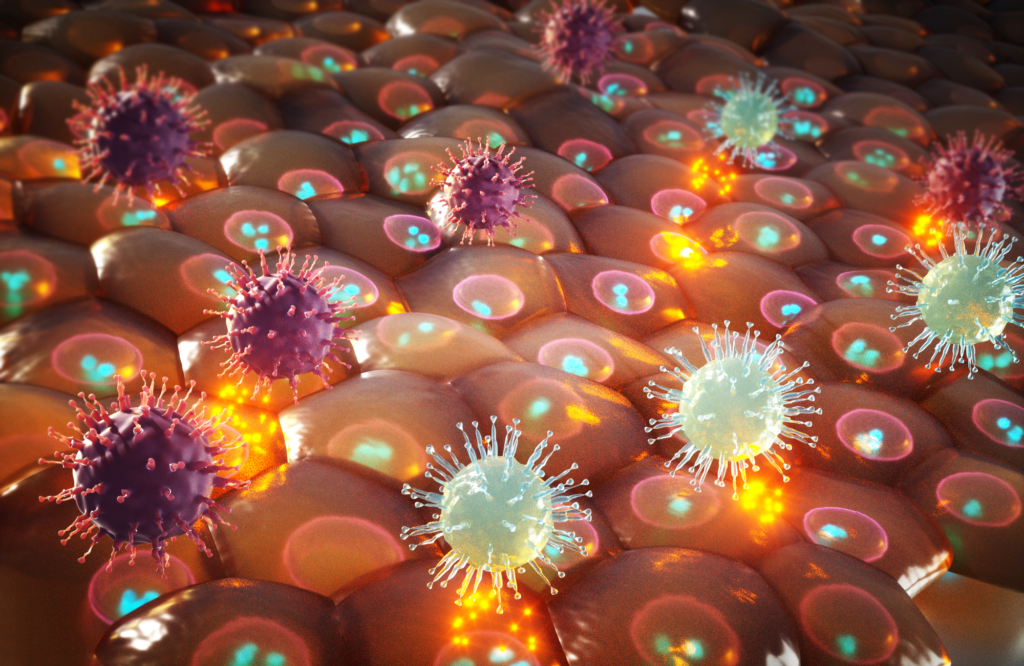Numerous cancers have been related to the viruses Epstein-Barr virus (EBV) and Kaposi sarcoma-associated herpesvirus (KSHV). For the first time, UNC School of Medicine researchers have shown that these viruses elude the innate immune response by using a human protein called barrier-to-autointegration factor 1, or BAF, which enables the viruses to propagate and cause disease.
 Viruses (EBV and KSHV) surrounding cells. Image Credit: Damania Lab
Viruses (EBV and KSHV) surrounding cells. Image Credit: Damania Lab
These results, which were published in Nature Communications, imply that BAF and related proteins could be therapeutic targets to prevent the dissemination of these viruses and the development of cancers like Kaposi sarcoma, non-Hodgkin lymphoma, Hodgkin lymphoma, multicentric Castleman disease, nasopharyngeal carcinoma, and gastric cancer.
Viruses are in a constant battle with the cellular immune system, which includes the protein cyclic GMP-AMP synthase, or cGAS, which binds to viral DNA and sounds the alarm to trigger immune responses and fight the viral invaders. We have discovered that KSHV and EBV use a different host cell protein, BAF, to prevent cGAS from sounding the alarm.”
Blossom Damania, PhD, Study Senior Author and Boshamer Distinguished Professor, Microbiology and Immunology, University of North Carolina School of Medicine
Since viruses have evolved alongside humans for millions of years, it is not surprising that they have developed strategies to circumvent the innate human immune systems. To develop vaccinations and treatments to combat viruses’ trickery, it is important to understand precisely how they operate.
The increased production of BAF after KSHV and EBV infection suggests that these viruses exploit the host protein to stifle the immune response to infection. Damania’s lab discovered via a series of tests that BAF aids in the deterioration of the cGAS DNA sensor.
The cells develop weaker immune responses because there is less cGAS protein accessible in the infected cell to recognize DNA, allowing these two viruses to multiply and spread more quickly.
BAF enables EBV and KSHV to reactivate from latency, replicate, and make more of themselves. Our study highlights the prominent role that DNA detection pathways like the cGAS pathway play in controlling viral infection.”
Grant Broussard, Study First Author and Graduate Student, Genetics and Molecular Biology Curriculum, UNC Lineberger
He emphasized that by reducing BAF immunosuppressive effects with targeted therapy, virus replication might be constrained to limit the spread of disease.
Damania, a Burroughs Wellcome Fund Investigator in Infectious Diseases and a Leukemia and Lymphoma Society Scholar, underlined, “Preventing lytic replication will prevent transmission of these viruses and also reduce the global cancer burden associated with these two viruses.”
Source:
Journal reference:
Broussard, G., et al. (2023). Barrier-to-autointegration factor 1 promotes gammaherpesvirus reactivation from latency. Nature Communications. doi.org/10.1038/s41467-023-35898-2